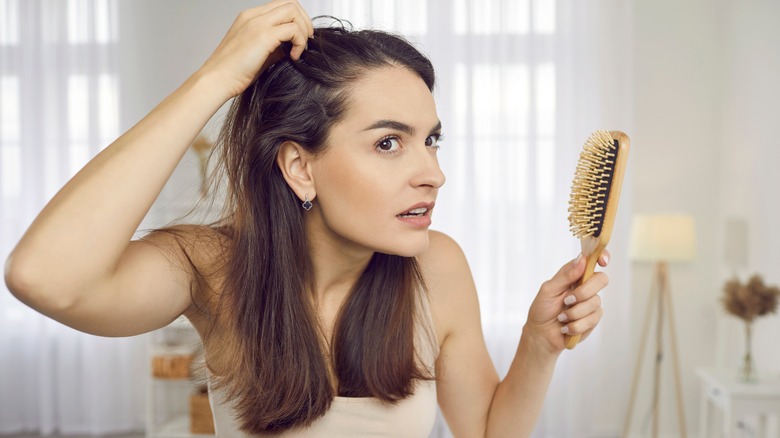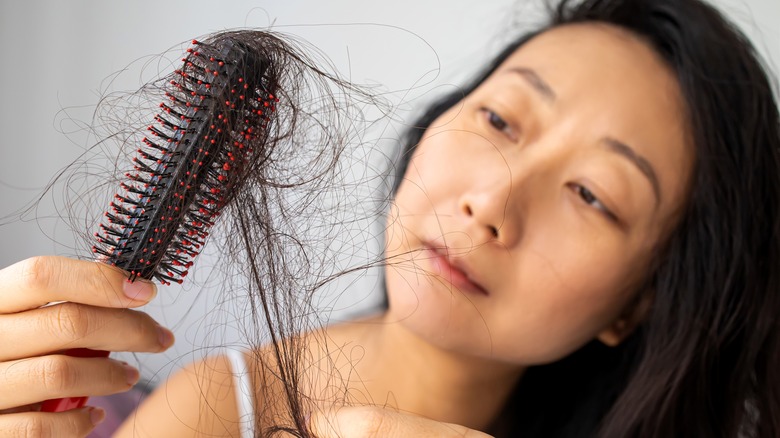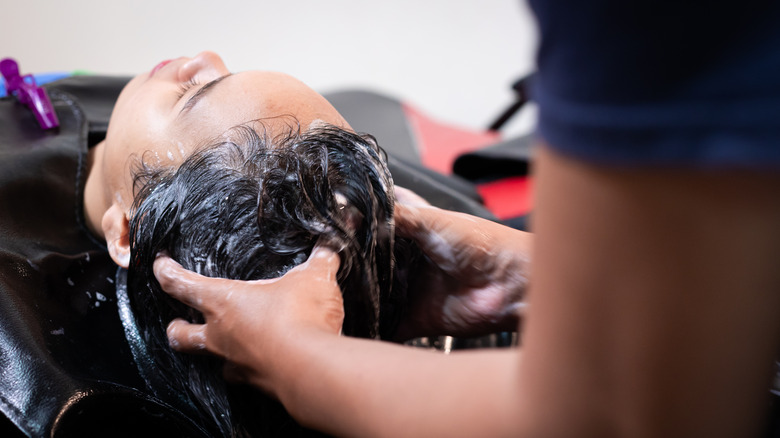When To See A Doctor About Daily Hair Loss
We may receive a commission on purchases made from links.
On average, we shed anywhere from 50 to 100 strands of hair per day, according to the American Academy of Dermatology. When brushing your hair or raking your hands through your hair, it's normal for a few strands to naturally come out on their own.
When a strand of hair reaches the end of its growth cycle, it will naturally fall out. Shedding is marked by a white bulb at the root, indicating that it came from the scalp. It will also be the length of your hair, rather than a fraction of the size, like hair breakage. When taking out a protective style, it may seem like you have an unusual amount of hair falling out, states Mielle. However, when you examine the hair itself, you should notice that it's more akin to natural shedding than abnormal hair loss.
Although it's normal to shed throughout the day, sometimes the amount of hair falling out may seem excessive. If you think the amount of hair shed is more than just the natural growth cycle, it may be time to see a dermatologist.
The difference between hair shedding vs. hair loss
When determining if you should see a doctor about hair loss, compare the amount you're currently losing to the hair you've shed in the past. Because everyone's growth cycle is different, the amount of hair you shed won't be the same as someone else, Medical News Today explains. Be observant of how much is left in the styling tool after brushing, as well as the strands that come out in the shower or after you take out braids to see if there are any differences.
Once you see that you're shedding more hair than normal, examine your scalp to see if it's thinner than before. A receding hairline will be a noticeable indication of hair loss. According to Verywell Health, when strands fall out at the end of their cycle, they may not grow back due to damaged hair follicles. Although it's a normal part of the aging process, if you catch it early, a dermatologist or trichologist may be able to do something about it.
Bald spots are common to find if you have excessive shedding or hair loss. They can grow in places that you part frequently, though they can appear anywhere else on the head. In women, bald spots may occur due to menopause, recently giving birth, tight hairstyles, and dieting (via Cleveland Clinic).
If you've gone through any of these lifestyle changes, it's normal to experience hair loss. However, if it's not slowing down after a period of time, a dermatologist can help you to get your hair back on track.
How to prevent excessive hair shedding
Although microneedling is typically associated with pigmentation and anti-aging on the skin, it can also be an effective treatment for hair loss. The process can be done by an esthetician, but microneedle tools are also sold in stores, so the procedure can be completed at home.
When used on the scalp, a dermaroller can stimulate the wound-healing process. Hormones known as growth factors will come out, causing blood vessels that help with hair growth to spring into action (via Ro). Although it can be effective for smaller bald spots, it works best in conjunction with other hair loss treatments.
Giving yourself scalp massages can make your hair thicker and fuller; they stretch the cells in hair follicles, prompting them to grow thicker, longer hair, reports Healthline. If your hair doesn't get greasy or stringy easily, you can use a hair growth oil, such as rosemary oil, in conjunction with a scalp massager.
For wash days, try the Briogeo Scalp Revival Stimulating Therapy Massager while shampooing. In small, circular motions, gently use the massager around the scalp to distribute the product and stimulate hair growth.
Healthy hair also starts from the inside. Foods such as fatty fish, spinach, nuts, and seeds that are high in vitamins, iron, and biotin will strongly impact your hair health, per WebMD.


